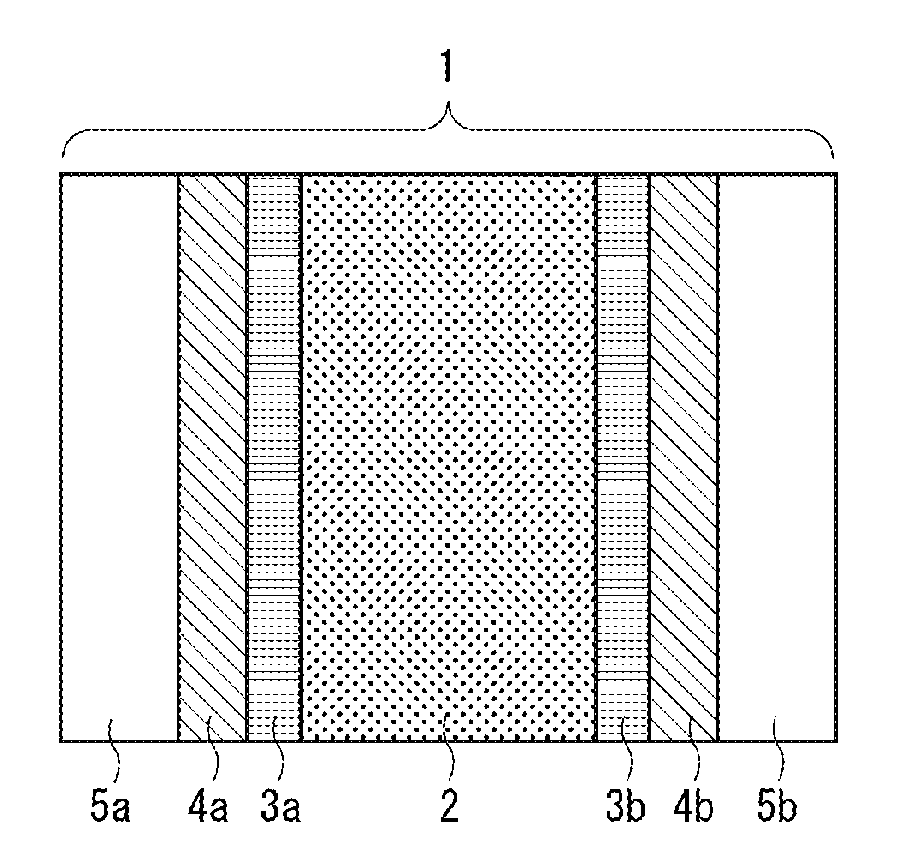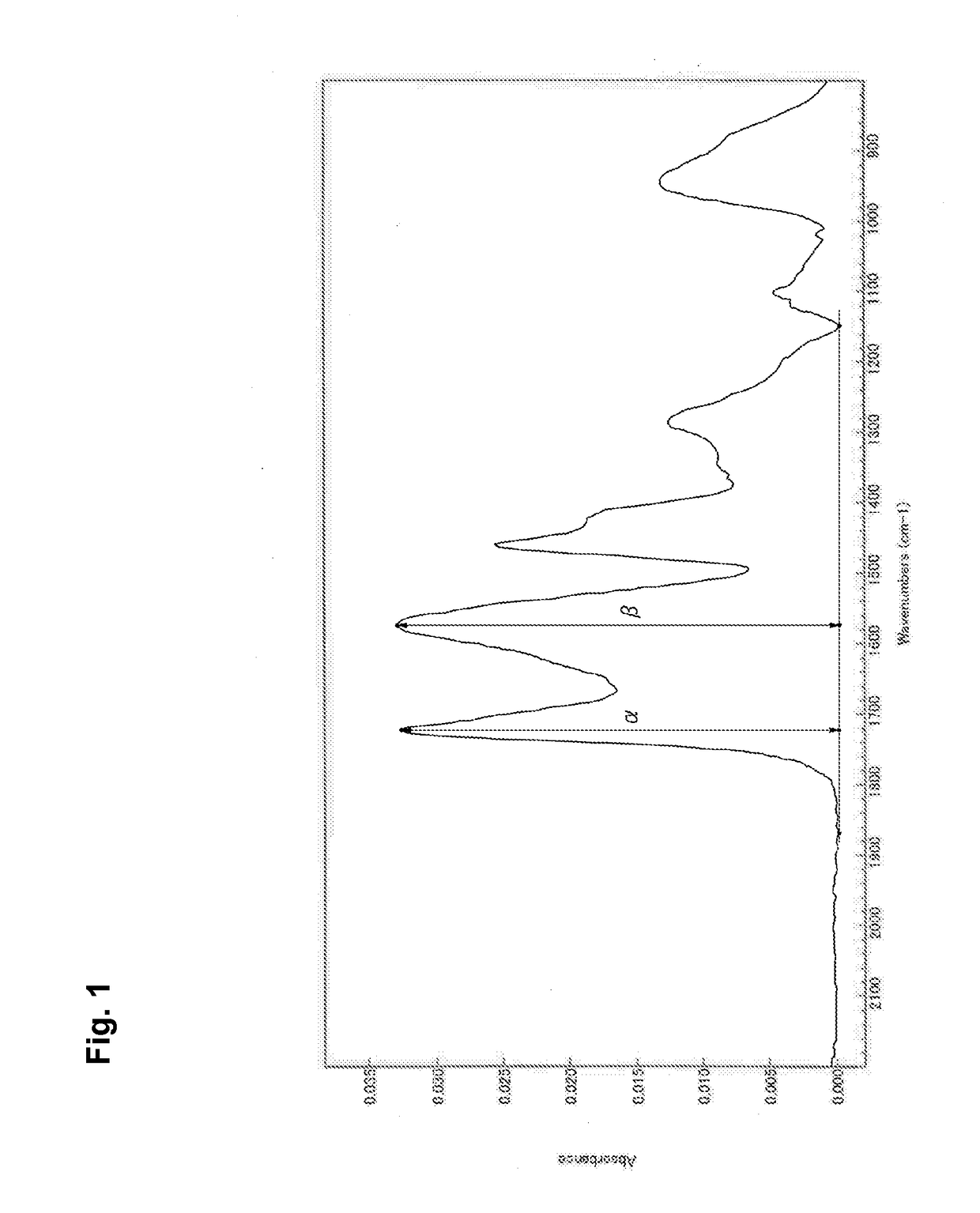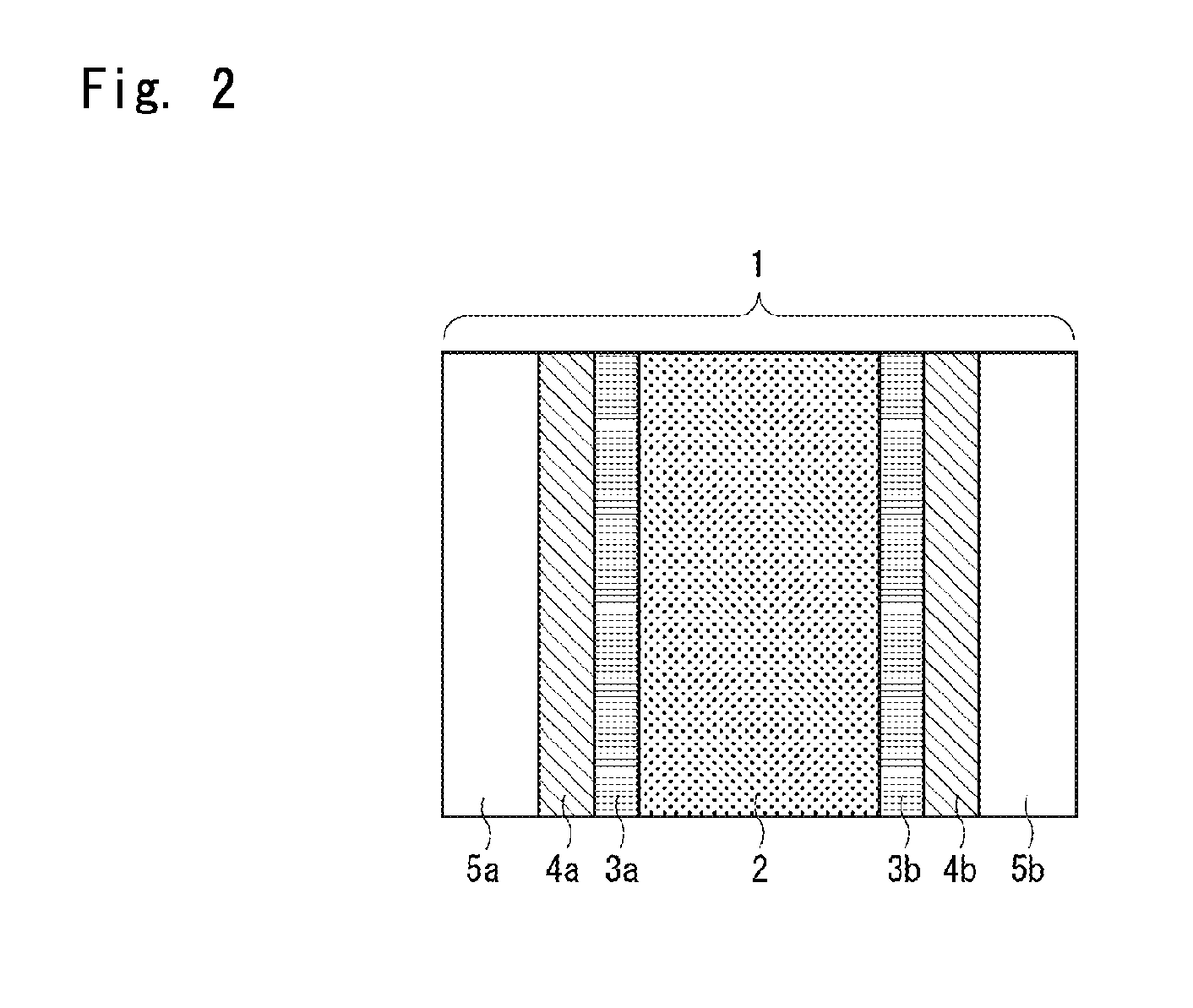Surface-treated metal sheet and organic resin-covered surface-treated metal sheet
a surface-treated metal and organic resin technology, applied in the direction of superimposed coating process, transportation and packaging, rigid containers, etc., can solve the problems of easy cracking of chromium phosphate, difficult to crack organic resin films, and often cracked bodies, etc., to achieve excellent hot water-resistant adhesion, excellent dent resistance, and low environmental load
- Summary
- Abstract
- Description
- Claims
- Application Information
AI Technical Summary
Benefits of technology
Problems solved by technology
Method used
Image
Examples
examples
[0117]The present invention will now be described in detail by way of concrete Examples to which only, however, the invention is in no way limited. In the following description, “parts” are all “by mass”.
(Synthesis of the Polyester Resin and Preparation of the Aqueous Dispersion Solution)
[0118]Into a reaction vessel equipped with a stirrer, a heater, a thermometer and a partly refluxing cooler, there were suitably fed polyvalent carboxylic acids, polyvalent carboxylic acid esters, polyhydric alcohols and a catalyst which are the starting materials. The reaction was carried out at a reaction temperature of 210 to 250° C., under a reduced pressure of not higher than 2 mmHg and a reaction time of 4 to 6 hours to synthesize polyester resins A to L shown in Table 1. The compositions of the obtained polyester resins A to L, glass transition temperatures (Tg) and acid values were measured by the methods described later.
[0119]100 Parts of a methyl ethyl ketone was added to 100 parts of the ...
examples 1 to 36
[Preparation of the Surface-Treating Solution]
[0127]A polycarboxylic acid type polymer was dissolved in the ion-exchanged water to obtain an aqueous solution containing 2% by mass of the polycarboxylic acid type polymer. To the thus obtained aqueous solution of the polycarboxylic acid type polymer, there was added an aqueous solution of a zirconium compound so as to attain a predetermined blending ratio of the solid component thereof. The aqueous solution of the zirconium compound was adjusted with the ion-exchanged water to be 2% by mass, and was then added to the aqueous solution of the polycarboxylic acid type polymer. Next, the ion-exchanged water was added thereto such that the solid component concentration of the polycarboxylic acid type polymer in the aqueous solution was 0.5 to 1% by mass, and the surface-treating solution was thus obtained.
[0128]As the polycarboxylic acid type polymer, there were used polyacrylic acids (“JURYMER AC-10LP, Mw=25,000” produced by TOAGOSEI Co.,...
PUM
| Property | Measurement | Unit |
|---|---|---|
| Tg | aaaaa | aaaaa |
| molar ratio | aaaaa | aaaaa |
| grain size | aaaaa | aaaaa |
Abstract
Description
Claims
Application Information
 Login to View More
Login to View More - R&D
- Intellectual Property
- Life Sciences
- Materials
- Tech Scout
- Unparalleled Data Quality
- Higher Quality Content
- 60% Fewer Hallucinations
Browse by: Latest US Patents, China's latest patents, Technical Efficacy Thesaurus, Application Domain, Technology Topic, Popular Technical Reports.
© 2025 PatSnap. All rights reserved.Legal|Privacy policy|Modern Slavery Act Transparency Statement|Sitemap|About US| Contact US: help@patsnap.com



